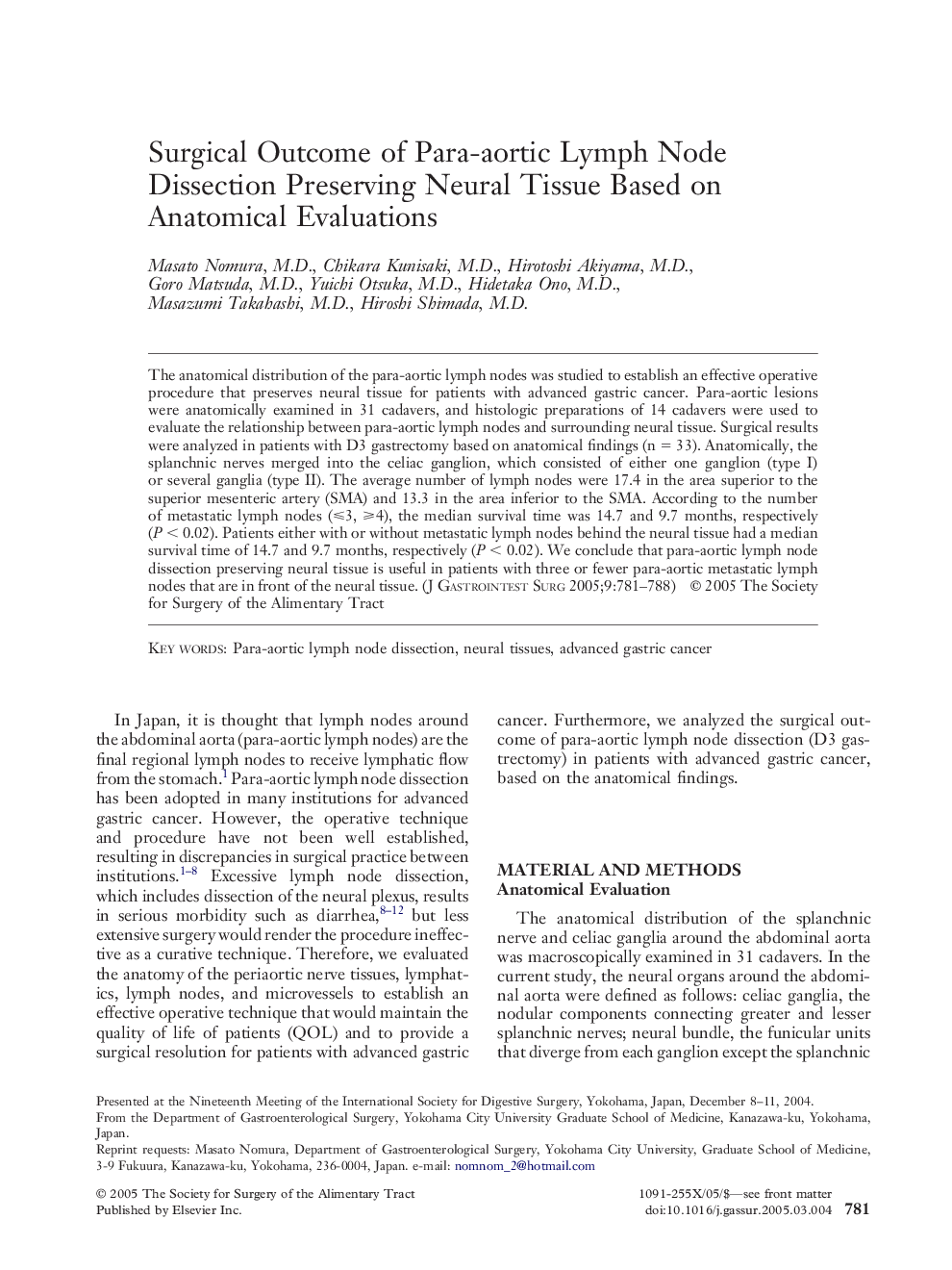| Article ID | Journal | Published Year | Pages | File Type |
|---|---|---|---|---|
| 9401357 | Journal of Gastrointestinal Surgery | 2005 | 8 Pages |
Abstract
The anatomical distribution of the para-aortic lymph nodes was studied to establish an effective operative procedure that preserves neural tissue for patients with advanced gastric cancer. Para-aortic lesions were anatomically examined in 31 cadavers, and histologic preparations of 14 cadavers were used to evaluate the relationship between para-aortic lymph nodes and surrounding neural tissue. Surgical results were analyzed in patients with D3 gastrectomy based on anatomical findings (n = 33). Anatomically, the splanchnic nerves merged into the celiac ganglion, which consisted of either one ganglion (type I) or several ganglia (type II). The average number of lymph nodes were 17.4 in the area superior to the superior mesenteric artery (SMA) and 13.3 in the area inferior to the SMA. According to the number of metastatic lymph nodes (â¤3, â¥4), the median survival time was 14.7 and 9.7 months, respectively (P < 0.02). Patients either with or without metastatic lymph nodes behind the neural tissue had a median survival time of 14.7 and 9.7 months, respectively (P < 0.02). We conclude that para-aortic lymph node dissection preserving neural tissue is useful in patients with three or fewer para-aortic metastatic lymph nodes that are in front of the neural tissue.
Related Topics
Health Sciences
Medicine and Dentistry
Surgery
Authors
Masato M.D., Chikara M.D., Hirotoshi M.D., Goro M.D., Yuichi M.D., Hidetaka M.D., Masazumi M.D., Hiroshi M.D.,
